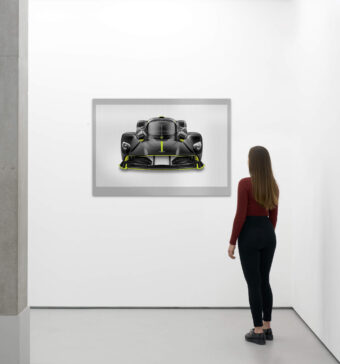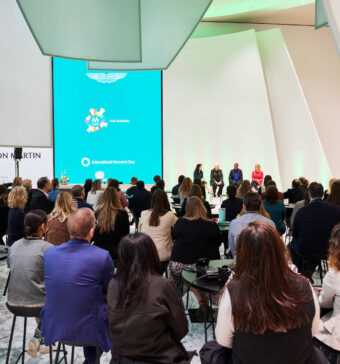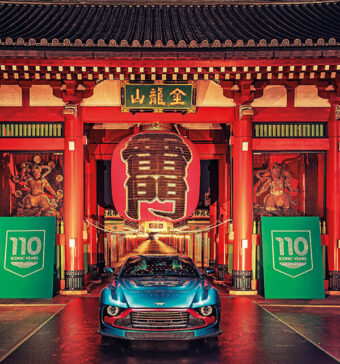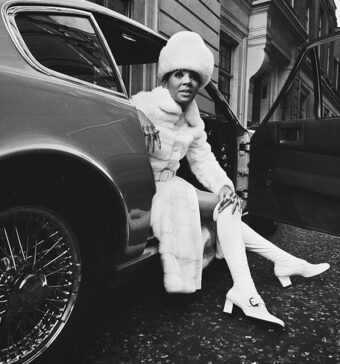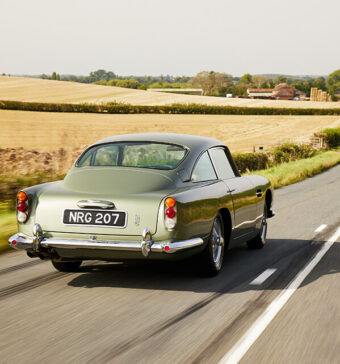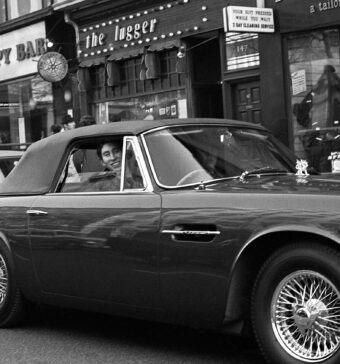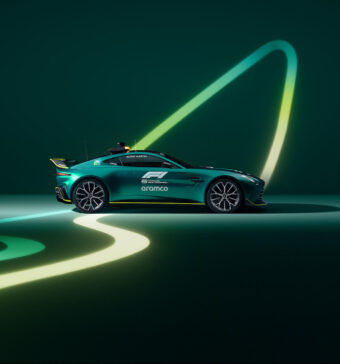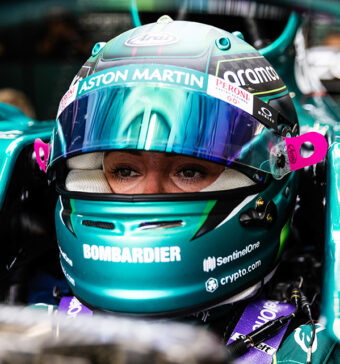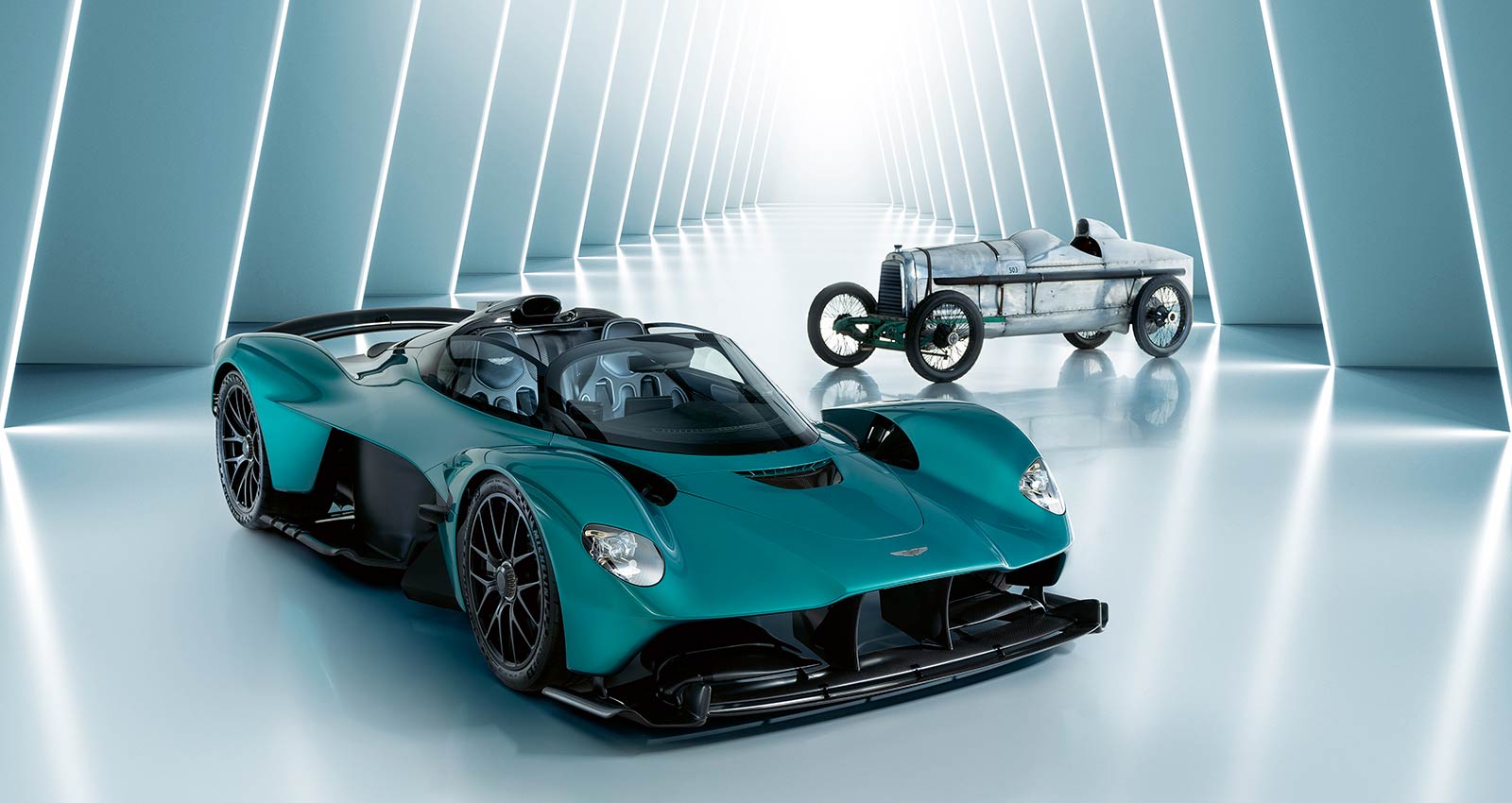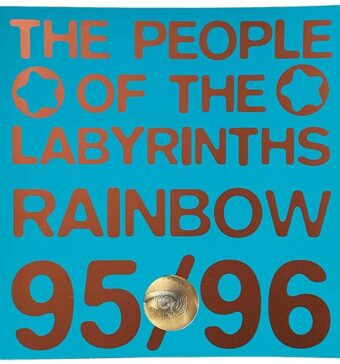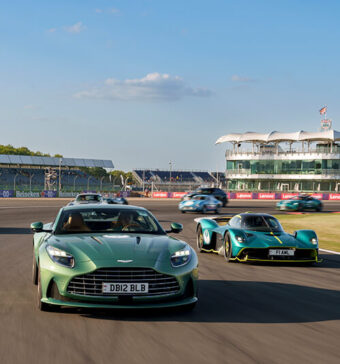Innovation is realised in many forms. Take the 1923 racer Razor Blade, one of the first cars to be designed with aerodynamics in mind. Named for its incredibly narrow bodywork, built by aircraft maker De Havilland, Aston Martin’s first race car pushed the boundaries of performance in 1923. Fast forward a century, and that same commitment is epitomised in the form of the Valkyrie, the marque’s no-holds barred hypercar, and the most intense incarnation of Aston Martin.
Images of these two era-defining models, photographed side-by-side and nose-tonose in celebration of Aston Martin’s 110th anniversary, provide an exhilarating portrait of Aston Martin’s past, present and future direction. While the Razor Blade was built to break records, which it did numerous times at Brooklands, the Valkyrie is the closest you can get to a Formula 1 race car for the road, bringing racetrack engineering to another dimension. But more than this, their meeting represents 110 years of Aston Martin’s performance DNA and provides an insight into what’s to come.
Staying true to its innovative heritage, Aston Martin is future-facing as it marks its milestone anniversary in 2023. It’s a year that promises to be as exciting as 1913 – not least because the marque’s year-long celebration will culminate in the launch of a new, strictly limited, highly exclusive model. Indeed, 2023 will be truly monumental as we see Aston Martin unleash the first of its next generation of sports cars, adding to the most diverse product portfolio in its history. As Aston Martin ramps up production of these highly anticipated models, which will further enhance its focus on ultra-luxury, high performance and driving intensity, excitement builds around the design, performance and technological enhancements due to be revealed.
Further ahead, the first battery electric Aston Martin is targeted for 2025, as Aston Martin seeks to bring its renown for engineering innovation, beautiful design and extreme personalisation to all-electric driving for the very first time. It’s a crucial step in Aston Martin’s electrification journey, which will see its core product range fully electrified by 2030.
Aston Martin has produced little more than 110,000 cars since founders Lionel Martin and Robert Bamford joined forces to build what was to become the first Aston Martin. This demonstrates the scarcity and exclusivity of the brand; but a glimpse into its past, present and future shows there are no limits to its inventive design and cutting-edge innovation and high-octane racing success.
Video: https://www.youtube.com/watch?v=H–kcQDecrc
FORWARD-THINKING
Aston Martin is a car marque immersed in history – yet with innovation built into every bolt.
Appointed as Chief Technology Officer in 2022, Roberto – who spent 26 years at Ferrari – has been tasked with plotting the company’s trajectory for the decades ahead.
Here, Anthony Teasdale talks to him about his vital roles in ensuring innovation is at front and centre of everything the company does.
Hi Roberto. When did you first fall in love with cars?
Actually, I wanted to be a researcher in university – my passion was aerodynamics. But there was no possibility to do this because of a lack of money. So I decided to work for a company, and that company was Ferrari. After 10 years I began to fall in love with cars. Before that I loved technology and innovation. But year by year, I began to drive their cars and get the feeling of being a customer. Over time, the work became my passion. How long were you there? I was at Ferrari for 26 years, then went to BMW for a couple of years, working on electric cars in the ‘i’ division. After that, I came back to Italy, working for Alfa Romeo-Maserati. I stayed there for five years. Then one day I was convinced to join Aston Martin, and I officially started in June last year.
What do you mean, ‘officially’?
My first day was actually the month before – I was on a visit. I landed at Oxford, and they brought me to the Gaydon factory from there. During the trip, the driver told me about the company and the story of the brand. When I arrived at Gaydon, I went upstairs and the first guy I met was Lawrence Stroll. He gave me a hug, and welcomed me. After half an hour we started to speak about cars, products, future technology and iconic Aston Martin models. My plan that day was to see the company, go back to Italy, and start work next month. Lawrence said: “We have a hotel, you can start working immediately.” My first visit was my first day at work!
What are your main goals at Aston Martin?
There are a lot of targets to hit. Most important is to let the engineering team grow their skills – helping them to become experts in the new technology that’s needed to develop cars for the market. Second, is to encourage people to work on multiple projects. Because if you want to progress you need one more product per year. Finally, your staff need to enjoy themselves while working. When you drive a car, you can tell whether the people that made it had fun or not.
What challenges are you facing as we move to electric vehicles and the first Aston Martin BEV in 2025?
he challenge is less about the powertrain – the risk is to lose something [by going electric] rather than gain something. You lose the sound of the engine, you lose the feeling and emotion of the gearbox. You’re losing what is not perfect – but you like – because it’s part of the emotion. This means electrification has to be a new story that lets us build a different product with different emotions. For us, electrification means wheel-by-wheel control through torque and speed. You can do what you want, you can push your car to the limit without risking anything. We are determined to produce a driver-focused experience, which is so important to the feeling of driving an Aston Martin.
What about the rest of the car?
With a flat battery and smaller motors than with the ICE [internal combustion engine] you have the chance to rethink the onboard space. This lets you design the interior of the car with completely different architecture. And it means our designers – who are the best in the world – will use their fantasies, their vision, their creativity to make something completely different.
Where do you see Aston Martin’s core models like Vantage, DB11 and DBX going?
The story of our iconic models will continue for many years. We are on the verge of revealing the first of our next generation of sports cars, and they’ll stay in the market until at least 2030, at which point we are targeting a fully electrified core portfolio. In fact, with the recent extension of the European rules for lowvolume manufactures – like Aston Martin, which makes less than 10,000 cars a year – the ICE could stay in the market until 2035. If the market will support this kind of choice, I expect we will continue to produce them.
What role does Aston Martin’s involvement in Formula 1 play in your plans?
Formula 1 is a source of ideas. But obviously not a source of components as they’re different. Yet the basic technology, the physics behind the car, is not so different between an F1 car and a sports car. With Aston Martin Aramco Cognizant Formula One® building their state-of-the-art facility in Silverstone, with its own wind tunnel, there is a great opportunity for us to develop a closer link between the two organisations and share expertise. Another benefit of working with an F1 team is its competitive spirit. You can’t be in the market coming second: winning means being better than the others!
What’s exciting about Aston Martin?
It’s the brand itself. It’s something I’ve never experienced. Don’t forget, I’m coming from Ferrari, which has a strong brand. But Aston Martin is special. What I like is the products, obviously, but also the team spirit that, thanks to Lawrence Stroll, we have in the company. Every day we’re getting better. What strengths does Lawrence bring? Having a chairman who has invested his own money in the business is completely different from what I have experienced in the past. Here, the owner is taking an active interest in supporting the decisions of the company. A manager at a normal business makes decisions to demonstrate he’s very good for the owner! Lawrence is a pragmatic guy, and he wants to add value to the company through products and leadership. He’s assembled a great agile team and we’re going to evolve the company with a speed that isn’t possible with other car businesses. This is the best opportunity Aston Martin has had in 30 years. I’m excited to be part of it!







